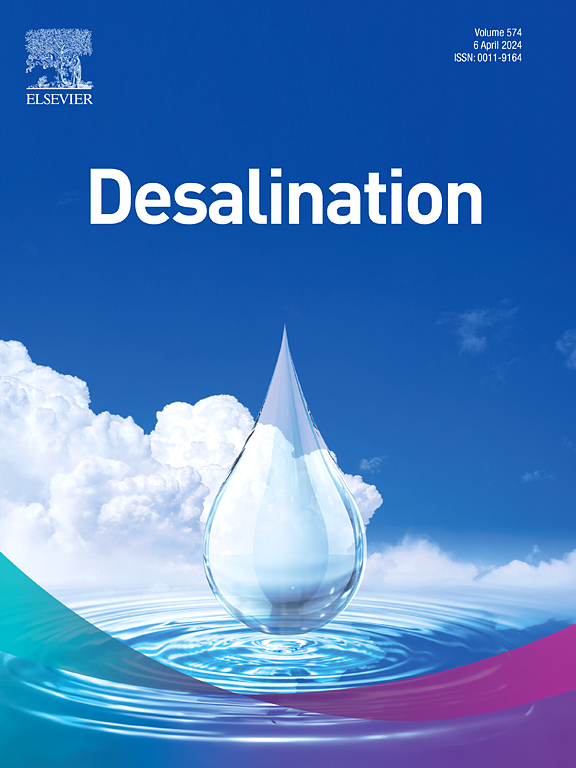Extreme chromium transformation and immobilization via ferrous coupling surfactant-enhanced nanofiltration process
IF 8.3
1区 工程技术
Q1 ENGINEERING, CHEMICAL
引用次数: 0
Abstract
The efficient reduction and immobilization of highly toxic and migratory Cr(VI) present significant challenges in chromium-containing wastewater. This research demonstrates that the Fe(II)-coupled micelle-enhanced nanofiltration (MENF) system facilitated the rapid conversion and removal of Cr(VI). The co-complexation of cetyltrimethylammonium chloride (CTAC) and Fe(II) improved the molecular-level coordination and reduction capacity of Cr(VI), leading to its effective transformation to Cr(III) and a 41 % removal rate of Cr. The interaction between CTAC, Cr, and Fe generated larger aggregates, such as CTAC-Cr, (Fex, Cr1−x)(OH)3, and CTAC-Cr-Fe, which enhanced Cr immobilization. Moreover, during the Fe(II)-coupled MENF process, a large amount of CTAC-Cr(III)-Fe(II, III) precipitates were removed during the complexation phase, while a small portion of the complexes adhered to the membrane surface, forming a porous cake layer. Due to the increased hydrodynamic diameter of the aforementioned Cr complexes, they could be easily retained by the nanofiltration membrane. Even under interference from high concentrations of anions and humic acids, the Fe(II)-coupled MENF system could still completely remove Cr(VI). This investigation contributes to a holistic understanding of the utilization of Fe(II)-coupled MENF systems and proposes effective sustainable strategies for Cr(VI) removal.

求助全文
约1分钟内获得全文
求助全文
来源期刊

Desalination
工程技术-工程:化工
CiteScore
14.60
自引率
20.20%
发文量
619
审稿时长
41 days
期刊介绍:
Desalination is a scholarly journal that focuses on the field of desalination materials, processes, and associated technologies. It encompasses a wide range of disciplines and aims to publish exceptional papers in this area.
The journal invites submissions that explicitly revolve around water desalting and its applications to various sources such as seawater, groundwater, and wastewater. It particularly encourages research on diverse desalination methods including thermal, membrane, sorption, and hybrid processes.
By providing a platform for innovative studies, Desalination aims to advance the understanding and development of desalination technologies, promoting sustainable solutions for water scarcity challenges.
 求助内容:
求助内容: 应助结果提醒方式:
应助结果提醒方式:


